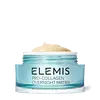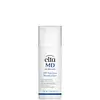What's inside
What's inside
 Key Ingredients
Key Ingredients

 Benefits
Benefits

 Concerns
Concerns

 Ingredients Side-by-side
Ingredients Side-by-side

Water
Skin ConditioningGlycerin
HumectantOlus Oil
EmollientPropanediol
SolventBehenyl Alcohol
EmollientSqualane
EmollientButylene Glycol
HumectantOctyldodecanol
EmollientDicaprylyl Carbonate
EmollientHelianthus Annuus Seed Oil
EmollientPhenoxyethanol
PreservativeAcrylates/C10-30 Alkyl Acrylate Crosspolymer
Emulsion StabilisingBeheneth-25
CleansingGlyceryl Acrylate/Acrylic Acid Copolymer
HumectantBenzoic Acid
MaskingLavandula Angustifolia Oil
MaskingDisodium EDTA
Dunaliella Salina Extract
Skin ConditioningRhizobian Gum
Sodium Hyaluronate
HumectantDehydroacetic Acid
PreservativeLinalool
PerfumingLavandula Hybrida Oil
EmollientPelargonium Graveolens Flower Oil
MaskingPadina Pavonica Thallus Extract
Skin ConditioningGeraniol
PerfumingEucalyptus Globulus Leaf Oil
PerfumingChlorphenesin
AntimicrobialPlankton Extract
Skin ConditioningAnthemis Nobilis Flower Oil
MaskingCitronellol
PerfumingPotassium Sorbate
PreservativeSodium Benzoate
MaskingCaramel
Cosmetic ColorantCinnamomum Camphora Wood Oil
MaskingLimonene
PerfumingMentha Arvensis Leaf Oil
MaskingTocopherol
AntioxidantXanthan Gum
EmulsifyingCaprylyl Glycol
EmollientCitrus Aurantium Dulcis Oil
MaskingParfum
MaskingTephrosia Purpurea Seed Extract
Skin ConditioningVitis Vinifera Seed Oil
EmollientMenthol
MaskingEugenia Caryophyllus Leaf Oil
MaskingSodium Hydroxide
BufferingGlyceryl Caprylate
EmollientLactic Acid/Glycolic Acid Copolymer
Skin ConditioningPhenylpropanol
MaskingPalmitoyl Tetrapeptide-50
Skin ConditioningPolyvinyl Alcohol
Heptapeptide-15 Palmitate
Skin ConditioningWater, Glycerin, Olus Oil, Propanediol, Behenyl Alcohol, Squalane, Butylene Glycol, Octyldodecanol, Dicaprylyl Carbonate, Helianthus Annuus Seed Oil, Phenoxyethanol, Acrylates/C10-30 Alkyl Acrylate Crosspolymer, Beheneth-25, Glyceryl Acrylate/Acrylic Acid Copolymer, Benzoic Acid, Lavandula Angustifolia Oil, Disodium EDTA, Dunaliella Salina Extract, Rhizobian Gum, Sodium Hyaluronate, Dehydroacetic Acid, Linalool, Lavandula Hybrida Oil, Pelargonium Graveolens Flower Oil, Padina Pavonica Thallus Extract, Geraniol, Eucalyptus Globulus Leaf Oil, Chlorphenesin, Plankton Extract, Anthemis Nobilis Flower Oil, Citronellol, Potassium Sorbate, Sodium Benzoate, Caramel, Cinnamomum Camphora Wood Oil, Limonene, Mentha Arvensis Leaf Oil, Tocopherol, Xanthan Gum, Caprylyl Glycol, Citrus Aurantium Dulcis Oil, Parfum, Tephrosia Purpurea Seed Extract, Vitis Vinifera Seed Oil, Menthol, Eugenia Caryophyllus Leaf Oil, Sodium Hydroxide, Glyceryl Caprylate, Lactic Acid/Glycolic Acid Copolymer, Phenylpropanol, Palmitoyl Tetrapeptide-50, Polyvinyl Alcohol, Heptapeptide-15 Palmitate
Water
Skin ConditioningEthylhexyl Isononanoate
EmollientNiacinamide
SmoothingGlyceryl Stearate
EmollientPEG-100 Stearate
Glycerin
HumectantHydroxyethyl Acrylate/Sodium Acryloyldimethyl Taurate Copolymer
Emulsion StabilisingC10-30 Cholesterol/Lanosterol Esters
EmulsifyingGlycereth-26
HumectantPhenoxyethanol
PreservativeLinoleic Acid
CleansingHydroxypropyl Bispalmitamide Mea
EmollientPotassium Cetyl Phosphate
EmulsifyingXanthan Gum
EmulsifyingTocopheryl Acetate
AntioxidantHydrolyzed Caesalpinia Spinosa Gum
AbsorbentOleth-3 Phosphate
Oleic Acid
EmollientEthylhexylglycerin
Skin ConditioningCaesalpinia Spinosa Gum
Skin ConditioningPolysorbate 60
EmulsifyingSorbitan Isostearate
EmulsifyingHydrolyzed Rice Protein
Skin ConditioningDisodium EDTA
Thioctic Acid
AntioxidantSodium Hyaluronate
HumectantPalmitic Acid
EmollientStearic Acid
CleansingSodium Bisulfite
AntioxidantPotassium Sorbate
PreservativeSodium Benzoate
MaskingPhosphoric Acid
BufferingTetrasodium EDTA
Water, Ethylhexyl Isononanoate, Niacinamide, Glyceryl Stearate, PEG-100 Stearate, Glycerin, Hydroxyethyl Acrylate/Sodium Acryloyldimethyl Taurate Copolymer, C10-30 Cholesterol/Lanosterol Esters, Glycereth-26, Phenoxyethanol, Linoleic Acid, Hydroxypropyl Bispalmitamide Mea, Potassium Cetyl Phosphate, Xanthan Gum, Tocopheryl Acetate, Hydrolyzed Caesalpinia Spinosa Gum, Oleth-3 Phosphate, Oleic Acid, Ethylhexylglycerin, Caesalpinia Spinosa Gum, Polysorbate 60, Sorbitan Isostearate, Hydrolyzed Rice Protein, Disodium EDTA, Thioctic Acid, Sodium Hyaluronate, Palmitic Acid, Stearic Acid, Sodium Bisulfite, Potassium Sorbate, Sodium Benzoate, Phosphoric Acid, Tetrasodium EDTA
Ingredients Explained
These ingredients are found in both products.
Ingredients higher up in an ingredient list are typically present in a larger amount.
Disodium EDTA plays a role in making products more stable by aiding other preservatives.
It is a chelating agent, meaning it neutralizes metal ions that may be found in a product.
Disodium EDTA is a salt of edetic acid and is found to be safe in cosmetic ingredients.
Learn more about Disodium EDTAGlycerin is already naturally found in your skin. It helps moisturize and protect your skin.
A study from 2016 found glycerin to be more effective as a humectant than AHAs and hyaluronic acid.
As a humectant, it helps the skin stay hydrated by pulling moisture to your skin. The low molecular weight of glycerin allows it to pull moisture into the deeper layers of your skin.
Hydrated skin improves your skin barrier; Your skin barrier helps protect against irritants and bacteria.
Glycerin has also been found to have antimicrobial and antiviral properties. Due to these properties, glycerin is often used in wound and burn treatments.
In cosmetics, glycerin is usually derived from plants such as soybean or palm. However, it can also be sourced from animals, such as tallow or animal fat.
This ingredient is organic, colorless, odorless, and non-toxic.
Glycerin is the name for this ingredient in American English. British English uses Glycerol/Glycerine.
Learn more about GlycerinPhenoxyethanol is a preservative that has germicide, antimicrobial, and aromatic properties. Studies show that phenoxyethanol can prevent microbial growth. By itself, it has a scent that is similar to that of a rose.
It's often used in formulations along with Caprylyl Glycol to preserve the shelf life of products.
Potassium Sorbate is a preservative used to prevent yeast and mold in products. It is commonly found in both cosmetic and food products.
This ingredient comes from potassium salt derived from sorbic acid. Sorbic acid is a natural antibiotic and effective against fungus.
Both potassium sorbate and sorbic acid can be found in baked goods, cheeses, dried meats, dried fruit, ice cream, pickles, wine, yogurt, and more.
You'll often find this ingredient used with other preservatives.
Learn more about Potassium SorbateSodium Benzoate is a preservative. It's used in both cosmetic and food products to inhibit the growth of mold and bacteria. It is typically produced synthetically.
Both the US FDA and EU Health Committee have approved the use of sodium benzoate. In the US, levels of 0.1% (of the total product) are allowed.
Sodium benzoate works as a preservative by inhibiting the growth of bacteria inside of cells. It prevents the cell from fermenting a type of sugar using an enzyme called phosphofructokinase.
It is the salt of benzoic acid. Foods containing sodium benzoate include soda, salad dressings, condiments, fruit juices, wines, and snack foods.
Studies for using ascorbic acid and sodium benzoate in cosmetics are lacking, especially in skincare routines with multiple steps.
We always recommend speaking with a professional, such as a dermatologist, if you have any concerns.
Learn more about Sodium BenzoateSodium Hyaluronate is hyaluronic acid's salt form. It is commonly derived from the sodium salt of hyaluronic acid.
Like hyaluronic acid, it is great at holding water and acts as a humectant. This makes it a great skin hydrating ingredient.
Sodium Hyaluronate is naturally occurring in our bodies and is mostly found in eye fluid and joints.
These are some other common types of Hyaluronic Acid:
Learn more about Sodium HyaluronateWater. It's the most common cosmetic ingredient of all. You'll usually see it at the top of ingredient lists, meaning that it makes up the largest part of the product.
So why is it so popular? Water most often acts as a solvent - this means that it helps dissolve other ingredients into the formulation.
You'll also recognize water as that liquid we all need to stay alive. If you see this, drink a glass of water. Stay hydrated!
Learn more about WaterXanthan gum is used as a stabilizer and thickener within cosmetic products. It helps give products a sticky, thick feeling - preventing them from being too runny.
On the technical side of things, xanthan gum is a polysaccharide - a combination consisting of multiple sugar molecules bonded together.
Xanthan gum is a pretty common and great ingredient. It is a natural, non-toxic, non-irritating ingredient that is also commonly used in food products.
Learn more about Xanthan Gum